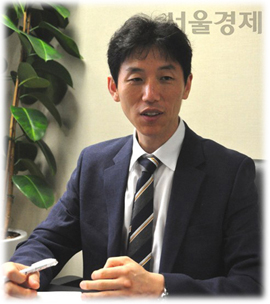| 일 | 월 | 화 | 수 | 목 | 금 | 토 |
|---|---|---|---|---|---|---|
| 1 | 2 | 3 | 4 | 5 | ||
| 6 | 7 | 8 | 9 | 10 | 11 | 12 |
| 13 | 14 | 15 | 16 | 17 | 18 | 19 |
| 20 | 21 | 22 | 23 | 24 | 25 | 26 |
| 27 | 28 | 29 | 30 | 31 |
- political phenomena
- power and organization
- Political Regimes
- Political power
- political organization
- Task Delegates of the Ruler: Inner Circle
- Differences in Individual Abilities and Tendencies
- the 2nd law
- Cohesion Force
- Political Regime
- 1st Law of politics
- Regime Change
- Power
- Canonical Politics
- Political Change
- Operation of the 2nd Law
- Order of Choice
- politics and war
- Samjae Capacity
- mechanism of politics
- new political science
- Mathematical Model of politics
- Samjae Capacities
- Orderliness of Choice
- the 3rd Law of politics
- politics of Inner Circle
- Value Systems
- politics
- Mathematical Model of political science
- survival process theory
- Today
- Total
New Political Science
Chapter 4. A. (1) Conditions for the Birth & Death of P. Organizations 본문
Chapter 4. A. (1) Conditions for the Birth & Death of P. Organizations
Political Science 2023. 12. 14. 17:24Chapter 4. Phenomena of Nation and Power
Until Chapter 3, I explained the fundamental laws underlying political phenomena. From Chapter 4 onwards, I will apply these laws to understand practical political situations and explain how I can utilize them to solve political problems within them.
A. Creation & Extinction of Political Organizations
(1) Conditions for the Birth & Death of P. Organizations
Political phenomenon is a power phenomenon, and in order to understand it, I will focus on the changes in political organizations. This is because political power arises and disappears with political organizations. As explained in Chapter 2, the relationship between power and organization is a manifest one because power cannot be exercised solely by the individual's capacity, but must necessarily be performed through organizational activities that are cooperative in nature. Furthermore, change can be understood as the disappearance of the previous and the emergence of the new. Therefore, the power phenomenon can be reduced to the creation and extinction of large and small political organizations.
Then, how does a political organization arise in the first place? Consider a group of friends who lack cohesion. When Peter and Kevin become close friends due to their shared middle school background, it marks the beginning of the formation of a group or organization. Later, Ben also joins the group. This real-life example illustrates the basic concept of the birth of a political organization that we can observe. Generalizing and summarizing, it can be expressed as follows:
[Ch.4.01] A political organization is generated when a superior party absorbs smaller ones along the cohesion condition in a vacuum condition.
Here, I can clearly formulate the key concepts of ㉠ the vacuum condition and ㉡ the cohesion condition as follows:
[Tab.4.1] Conditions for the Emergence of Political Organizations
| Focus | Two Conditions | Meaning of the Conditions |
| Conditions for the Emergence of Political Organizations | ㉠ Vacuum Condition: The state of a dominant organization being absent | Anarchy. Various political entities compete under relatively equal conditions. |
| ㉡ Cohesion Condition: The state of preemption in relationships | Existence of factors that bind and promote cooperation among each political entity, such as blood ties and geographical proximity. |
This content indicates that if there is a situation where various political actors compete against each other to expand their survival (vacuum condition), there are also reasons for political actors to merge and cooperate (cohesion condition). To explain this concept intuitively, the combination of vacuum and cohesion conditions is like a snowball on a snowy field. The snowy field represents a situation where individual snowflakes are scattered (vacuum condition), and the snowball represents the snowflakes that have already combined (cohesion condition). Now, if the snowball rolls on the snowy field, it will grow bigger and bigger, and similarly, if these conditions are met, political actors will act according to the survival process theory[Ch.1.1] like a rolling snowball, and political organizations will naturally emerge. When it becomes large enough, it becomes what we usually call a political group or a nation.
On the other hand, the creation and extinction of power are simultaneous. In the PKB case, a cooperative system centered on Peter was established at first, but later a cooperative system centered on Kevin or Ben was established. At this time, the cooperative system centered on Kevin is achieved by the extinction of the center system centered on Peter. In other words, the creation and extinction of political power and political organization are like two sides of a coin. Meanwhile, the extinction of a political organization signifies the disappearance of a dominant organization, but other cohesion conditions that preempt relationships among political actors still remain.
Now let me examine the exact meanings of the vacuum condition and the cohesion condition in which political organizations are generated and extinguished.
'Mechanism of Politics' 카테고리의 다른 글
| b. ㉣ Primitive Economy and Advanced Economy (0) | 2023.12.18 |
|---|---|
| b. Wealth Gap (0) | 2023.12.17 |
| b. ㉠ Efficiency of Cooperative Relationships (0) | 2023.12.14 |
| b. Concentration of Power and its Cause (0) | 2023.12.14 |
| (2) a. When the 2nd Law Operates in A Single Layer (0) | 2023.12.14 |


